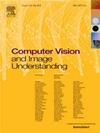Structure perception and edge refinement network for monocular depth estimation
IF 4.3
3区 计算机科学
Q2 COMPUTER SCIENCE, ARTIFICIAL INTELLIGENCE
引用次数: 0
Abstract
Monocular depth estimation is fundamental for scene understanding and visual downstream tasks. In recent years, with the development of deep learning, increasing complex networks and powerful mechanisms have significantly improved the performance of monocular depth estimation. Nevertheless, predicting dense pixel depths from a single RGB image remains challenging due to the ill-posed issues and inherent ambiguity. Two unresolved issues persist: (1) Depth features are limited in perceiving the scene structure accurately, leading to inaccurate region estimation. (2) Low-level features, which are rich in details, are not fully utilized, causing the missing of details and ambiguous edges. The crux to accurate dense depth restoration is to efficiently handle global scene structure as well as local details. To solve these two issues, we propose the Scene perception and Edge refinement network for Monocular Depth Estimation (SE-MDE). Specifically, we carefully design a depth-enhanced encoder (DEE) to effectively perceive the overall structure of the scene while refining the feature responses of different regions. Meanwhile, we introduce a dense edge-guided network (DENet) that maximizes the utilization of low-level features to enhance the depth of details and edges. Extensive experiments validate the effectiveness of our method, with several experimental results on the NYU v2 indoor dataset and KITTI outdoor dataset demonstrate the state-of-the-art performance of the proposed method.
单目深度估计的结构感知和边缘细化网络
单目深度估计是场景理解和视觉下游任务的基础。近年来,随着深度学习的发展,越来越复杂的网络和强大的机制显著提高了单目深度估计的性能。然而,由于病态问题和固有的模糊性,从单个RGB图像预测密集像素深度仍然具有挑战性。两个未解决的问题仍然存在:(1)深度特征在准确感知场景结构方面受到限制,导致区域估计不准确。(2)细节丰富的底层特征没有得到充分利用,导致细节缺失,边缘模糊。精确的密集深度恢复的关键是有效地处理场景的全局结构和局部细节。为了解决这两个问题,我们提出了用于单目深度估计的场景感知和边缘细化网络(SE-MDE)。具体来说,我们精心设计了一个深度增强编码器(deep -enhanced encoder, DEE),以有效地感知场景的整体结构,同时细化不同区域的特征响应。同时,我们引入了密集边缘引导网络(DENet),最大限度地利用底层特征来增强细节和边缘的深度。大量的实验验证了我们方法的有效性,在NYU v2室内数据集和KITTI室外数据集上的几个实验结果证明了所提出方法的最先进性能。
本文章由计算机程序翻译,如有差异,请以英文原文为准。
求助全文
约1分钟内获得全文
求助全文
来源期刊

Computer Vision and Image Understanding
工程技术-工程:电子与电气
CiteScore
7.80
自引率
4.40%
发文量
112
审稿时长
79 days
期刊介绍:
The central focus of this journal is the computer analysis of pictorial information. Computer Vision and Image Understanding publishes papers covering all aspects of image analysis from the low-level, iconic processes of early vision to the high-level, symbolic processes of recognition and interpretation. A wide range of topics in the image understanding area is covered, including papers offering insights that differ from predominant views.
Research Areas Include:
• Theory
• Early vision
• Data structures and representations
• Shape
• Range
• Motion
• Matching and recognition
• Architecture and languages
• Vision systems
 求助内容:
求助内容: 应助结果提醒方式:
应助结果提醒方式:


